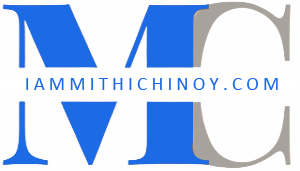
Photo by Johannes Plenio on Unsplash
Being a freelancer isn’t easy, no matter what people tell you. Ask me. I’ve been in this field for a couple of decades, if not more. And in the course of my experience, I have found the need to adapt, innovate, and constantly improve my skills.
That, I believe, is the key to success.
One of the most powerful tools that has brought me success is self-feedback. This involves evaluating my work critically, identifying growth areas, and charting a course for better progress.
In this article, I’ll share a few insights from my freelance journey on mastering self-feedback and how it can transform your work.
How I Approached Self-Feedback
Table of Contents
- 1 How I Approached Self-Feedback
- 2 My Strategies for Self-Feedback
- 3 Journaling and Reflecting:
- 4 Using Writing Analytics Tools:
- 5 Self-Assessment Checklists:
- 6 Reviewing My Portfolio Regularly and Goal-Setting:
- 7 How I Apply Self-Feedback in My Freelance Work
- 8 Managing Challenges and Opportunities
- 9 Lessons from My Journey
- 10 Takeaway
For me, self-feedback is a fundamental habit, one that shapes both my work and my life. I built this structured process over some time.
I began with understanding how I assess my performance. I recognized my areas of strength like crafting snappy headlines and writing engaging narratives. I also identified my areas of weakness, such as missed deadlines and panicking in the face of a heavy workload.
Using self-feedback has changed all of that. Ever since I have been using this strategy, I set clear goals and developed actionable strategies that have helped me progress in my journey for personal and professional growth.
My Strategies for Self-Feedback
In my pursuit of self-improvement, I’ve adopted a set of strategies tailored to my unique freelance journey. From establishing clear objectives aligned with my ambitions to adapting to honest self-reflection and seeking diverse perspectives, each strategy plays a unique role in my growth.
Here are the four self-feedback strategies that you, as a freelance writer, can use:
Journaling and Reflecting:
Strategy: I set aside some time at the end of each day to journal about my achievements of the day, the challenges I faced, and the areas of improvement.
Example: Typically, I take about 15 minutes to write down my thoughts on all the things that went well during the day. Then, I list the obstacles I faced. Lastly, I list down any ideas I have to improve my writing techniques.
Using Writing Analytics Tools:
Strategy: I use writing analytics tools like Grammarly to refine my writing. It spots grammar, punctuation, and spelling mistakes. It enhances the clarity and readability of my writing. It also improves my writing tone and style.
Example: Grammarly helps identify writing patterns so that my choice of words is not repetitive.
Self-Assessment Checklists:
Strategy: I assess my writing quality against self-assessment checklists on specific parameters like adherence to style guidelines, clarity, creativity, and coherence.
Example: I create a checklist based on the above criteria and rate myself on it. This helps me improve my writing.
Reviewing My Portfolio Regularly and Goal-Setting:
Strategy: I evaluate my progress by reviewing my writing portfolio periodically. I spot recurring themes and set precise, measurable goals for my future projects.
Example: At the end of every month, I review the articles, blogs, and posts I published that month. I make note of the articles that got a lot of engagement and those that didn’t. Based on the review, I create goals for the next month where I tackle the problems in my writing.
How I Apply Self-Feedback in My Freelance Work
I now realize the worth of self-feedback in my life. So, I use it to guide me to excellence in all my projects. No matter which stage of the writing process I am in, I use this method to rate my performance. I integrate all the feedback I get into my workflow and strive for better results. After all, like anyone else, I too strive for client satisfaction.
Managing Challenges and Opportunities
The path of self-feedback may be rewarding, but let’s not forget the challenges it brings with it. When you’re unsure of yourself, you might have to face the challenges of internal and external feedback.
But I’ve learned to manage these challenges with resilience. By adapting to these challenges and seeing them as growth opportunities, I now have a growth mindset that prospers with self-awareness and continuous improvement.
Lessons from My Journey
My freelance journey has been peppered with moments of great discovery and growth, all due to the power of self-feedback. Through personal reflections, I’ve gained precious insights into the life-changing potential of self-assessment. Each lesson I learned, and each milestone I achieved, is proof of the lasting impact that self-awareness has had on my professional growth.
Takeaway
As I look back on my journey, I recall the deep impact self-feedback has had on my freelance career. I prioritized self-awareness, adapted to feedback, and cultivated a growth mindset. This took me to higher levels of success and work fulfillment.
I did it. And won the race against self-doubt. I know you can do it too.
Start today.
